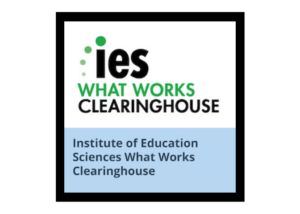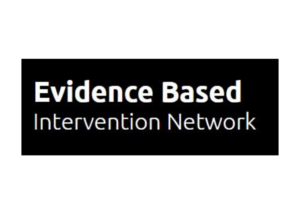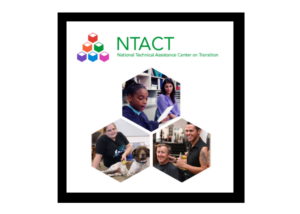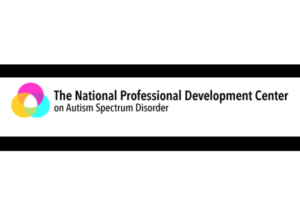Implementing Evidence-Based Practices in the Classroom
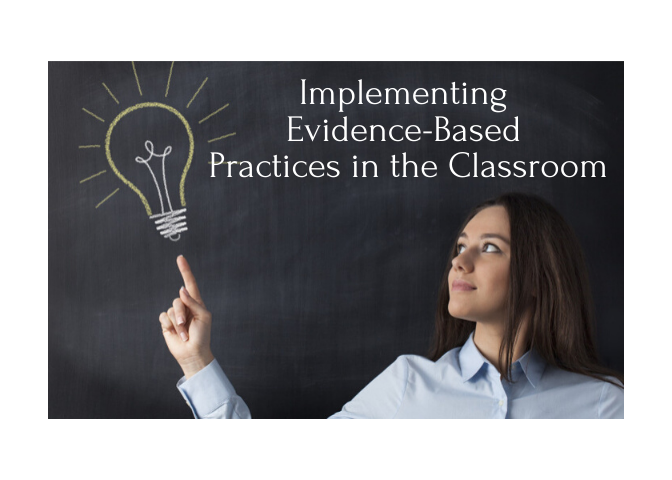
(Please note the information is adapted from A Special Educator’s Guide to Successfully Implementing Evidence-Based Practices By Torres, Farley and Cook, 2012).
Implementing an evidence-based practice in the classroom can seem like a daunting task. Not only are you examining the research behind the practice, but you are thinking about data collection and evaluating whether the practice is positively impacting your students.
We are going to break down the 10 Steps for Implementing Evidence-Based practices by Torres, Farley, and Cook (2012).

Torress, Farley and Cook (2012) suggest using a a ten step approach to implementing evidence-based practices in the classroom. These steps involve selecting and evaluating and EBP, implementation and fidelity, progress monitoring student performance and becoming and leader and advocate for EBPs in your school.
Let’s take a look at each of the steps.

The first step in implementing and evidence-based practice (EBP) is to select the students, the environment and the teacher characteristics. You need to know the students that will be receiving the EBP, their grade, age, etc. All of these factors will impact the EBP that you choose. Along with student demographics, you need to choose the learning environment that you will be delivering the EBP in. Considerations need to be made for number in the group, how much time do you have, what resources will you need and what environment matches best (large group or small group). All of these factors determine what EBP will be the best fit for your students.
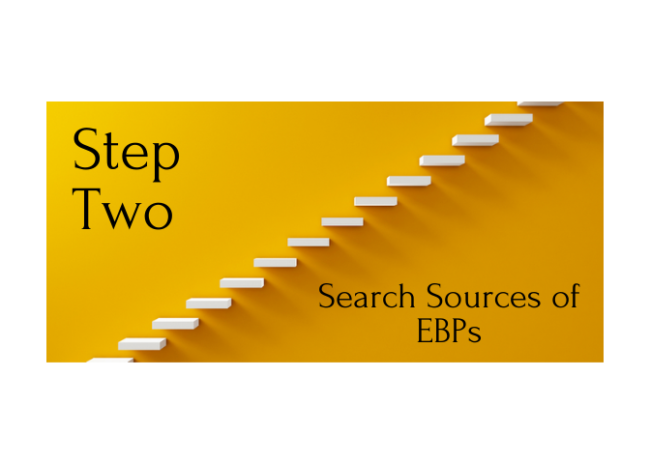
When selecting and EBP, the first place you should go are to reputable sources of information. I mean you wouldn’t go to the Food Network to find out about how to fix plumbing. The same applies to EBPs. Picking the right fit for an EBP to match the student, environment and teacher characteristics can tricky. However there are some great places to look for identifying what EBP will best fit your student needs.
Here are a few places to consult when selecting and EBP.
Click on the images to access the resources.
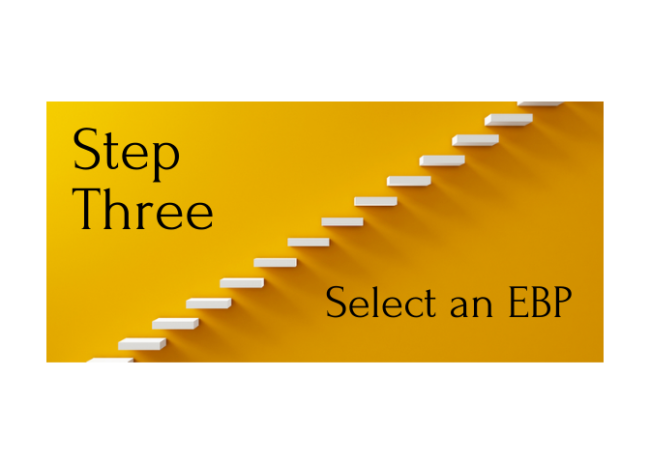
Now that you have gone to a reputable site to collect information on the EBP that is the best fit for your student, environment and teacher characteristics, it is time to select the EBP. This process can be tricky in that there may not be an EBP that best fits the above descriptors. If struggling to find an EBP, consider the outcomes that you want for your students. The EBP should meet the student’s disability needs and try to be most aligned with the teacher characteristics and environment. Use your best professional judgement based off the information from reputable sources, which best matches the outcomes and disability needs of your students and what is the closest match to environment and teacher characteristics.
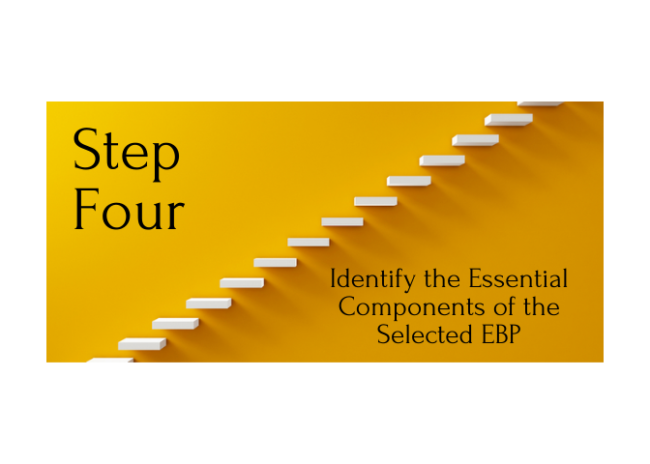
Once you have selected your EBP, the next step is to identify it’s essential components. Think of these as the ingredients in a recipe. If you miss an ingredient in the recipe then the end result will not come out the way you want. The same goes for EBP. If you leave out essential components of the program or practice, then the results will not be as positive on student outcomes. If the EBP that you have chosen has an implementation checklist, this is a great place to start to find the essential components of the EBP.
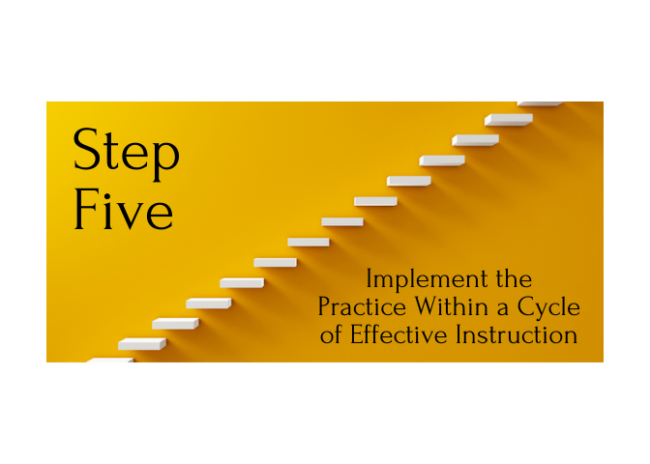
You’ve selected the EBP, identified it’s essential components and now you are ready to implement the EBP. Remember that a EBP does not replace an effective teacher. Think about implementation like riding a tandem bicycle. For the bike to move forward, it takes the person in the front and the person in the back to make the bike move. The same goes for EBPs. It takes the research backed practice or program plus your knowledge of explicit and systematic instruction to see positive impacts on your students. If you are implementing and EBP that may acquire additional training, reach out to your administrators to set up the training for you and to identify who in your county can help you get started.
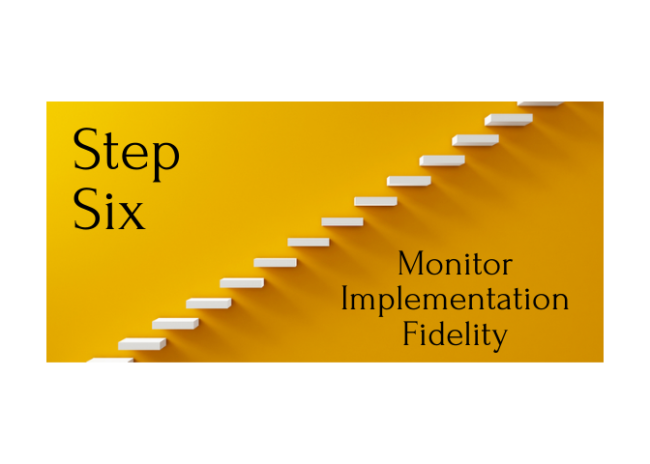
After you have begun implementing the EBP, it is important to track that the EBP is being implemented using all the essential components and that each component is being taught effectively. The way to do this is to use the programs implementation fidelity checklist. Each week, complete the implementation fidelity checklist to make sure the EBP is being done correctly and with all the essential components. To even increase fidelity more, have a coach or fellow teacher using the same EBP to come and observe you teach a lesson and fill out the implementation checklist to track how you did. This is an important step in implementing an EBP because it helps you to track how well the program or practice is being delivered to students, if all the essential elements are being done by the teacher and to see if any additional training is needed to fully implement the EBP with fidelity.
This is an example of a fidelity checklist:


Before you implement an EBP, you should create a plan for collecting data to monitor student progress. EBPs have an increased likelihood of providing positive outcomes for students, but their impact on students should still be accessed. Taking progress monitoring data ensures that the EBP is having an effect on student outcomes as well as providing information about the impact of delivery from the teacher on student outcomes. The best way to progress monitor EBPs is to use criterion-based measurement. These are repeated and criterion-references probes that can be given weekly to monitor student progress. CBM probes are short and administered with a set of guidelines and timings to ensure they are capturing the student performance the same from week to week. Consider looking at this website section on criterion-based measurement.
To visit this websites section on Criterion-Based Measurement, click here.
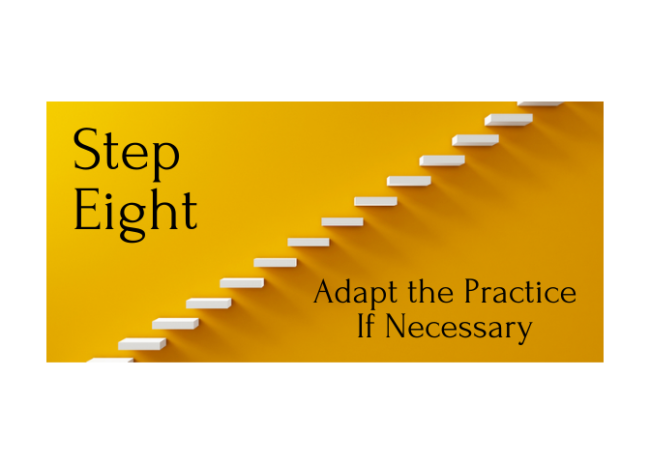
Once you are familiar with implementing your EBP, there may need to be adaptations to optimize the program to fit teaching style or student needs. Think about it like this…if you are trying to learn a new dance, you instructor may make changes to how they teach you choreography. They may change working, approach instruction differently or change how they present the new material to you. All of these are different adaptions from the traditional way of teaching choreography but are tailored to your needs. The same can be done with an EBP. Proceed with caution though! Use adaptions that are proven to impact student achievement and not those purely based on intuition. Use the information from your CBM progress monitoring to help track whether implementations are having a positive effect on student outcomes.
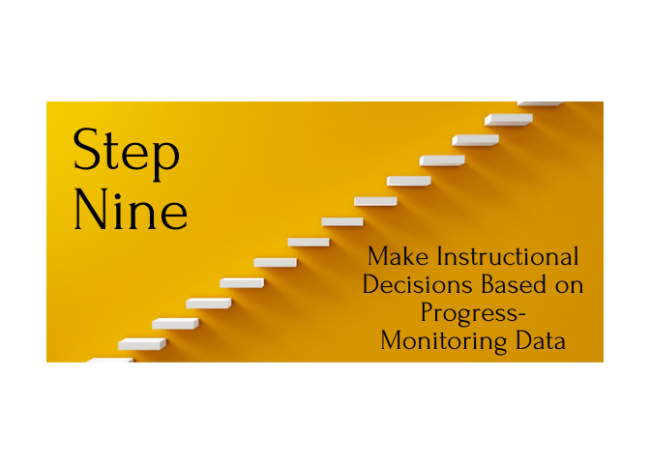
One key component on making deciding if an EBP is effective is data. Data-based decisions ensure that the changes you are making to a students program are based in fact and not in intuition or feeling. If an EBP is showing a positive trend towards a students goal, then you don’t need to implement adaptations. You would continue to monitor student progress weekly with CBM probes and continue with the EBP. If you consult you CBM graph and notice that there is not a strong positive impact on students performance, then you can safely say that based on the data a change needs to be made. Before making adaptations, check you implementation fidelity to assess whether the program is being delivered as prescribed. Next, ensure that effective teaching practices are being implemented along with the EBP. It may be that a simple change like increasing opportunities to respond or positive correct feedback could impact the EBPs effectiveness. If you have made adaptations, make sure that they match student needs and the environment to maximize their effectiveness for students. If after exhausting all of these options, it could be time to select a new EBP and start the 10 steps for implementation over again.

Being an advocate for EBP in your school is an important part of evidence-based practices. Since you have implemented and seen the positive outcomes for your students, consider working with other teachers in your building to help them select and implement EBPs in their classrooms. You can also take your knowledge of EBPs and advocate for change within your district. If a new curriculum adoption is coming up consider researching the options and providing your opinion and feedback to the district.

Monitoring implementation of evidence-based practices is extremely important. Ensuring that all essential components of the program are being done with fidelity along with effective instructional practices will increase the likelihood that the EBP will have a positive impact on student outcomes. Remember that EBPs should be driven by data and data-based decisions are going to be more effective than those made fro intuition.
For additional information on implementing evidence-based practices, consider completing the Iris Center’s module on EBP implementation.
To access the Iris Center EBP module on implementation, click the image below.
References:
Best Evidence Encyclopedia — Empowering Educators with Evidence on Proven Programs. (n.d.). Retrieved November 4, 2019, from http://www.bestevidence.org/.
Evidence Based Intervention Network. (n.d.). Retrieved October 18, 2019, from http://ebi.missouri.edu/.
Evidence-Based Practices (Part 2): Implementing a Practice or Program with Fidelity. (n.d.). Retrieved November 4, 2019, from https://iris.peabody.vanderbilt.edu/module/ebp_02/#content.
Find NTACT Resources. (2019, September 24). Retrieved November 4, 2019, from https://transitionta.org/#content.
Home: National Center on Intensive Intervention. (n.d.). Retrieved October 18, 2019, from https://intensiveintervention.org/.
Find NTACT Resources. (2019, September 24). Retrieved November 4, 2019, from https://transitionta.org/#content.
Torres, C., Farley, C. A., & Cook, B. G. (2012). A special educator’s guide to successfully implementing evidence-based practices. TEACHING Exceptional Children, 45(1), 64–73.
We Provide Opportunities to Learn for Teachers and Leaders. (n.d.). Retrieved October 18, 2019, from http://ceedar.education.ufl.edu/.
WWC: Find What Works! (n.d.). Retrieved October 18, 2019, from https://ies.ed.gov/ncee/wwc/.

